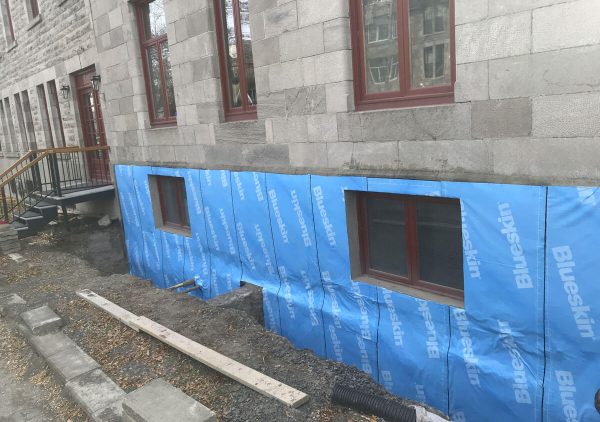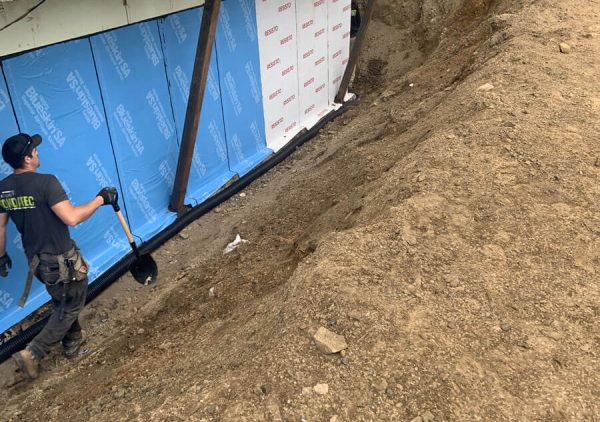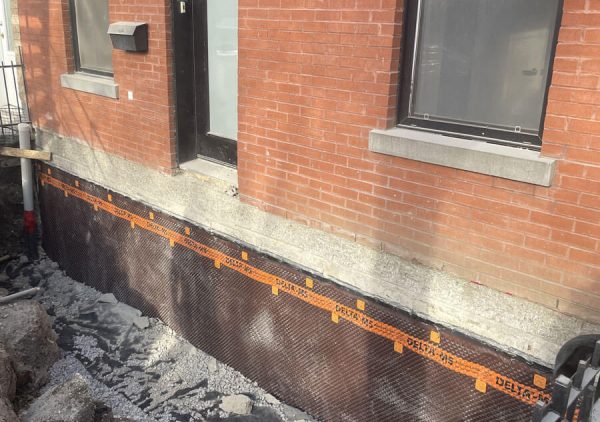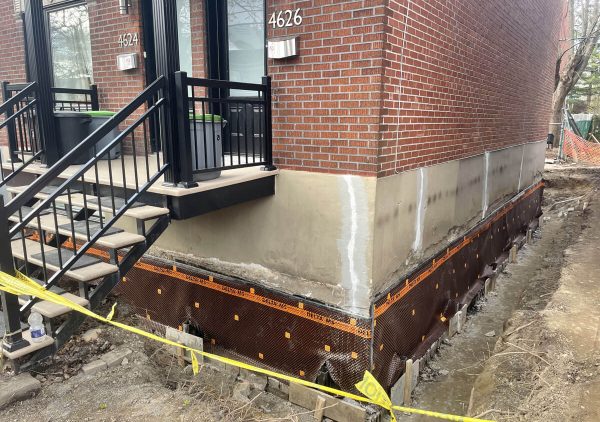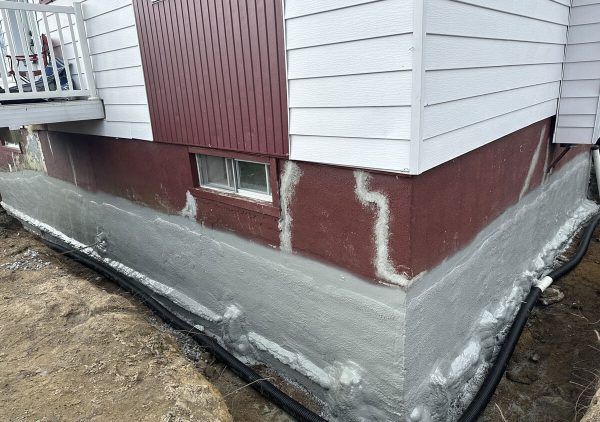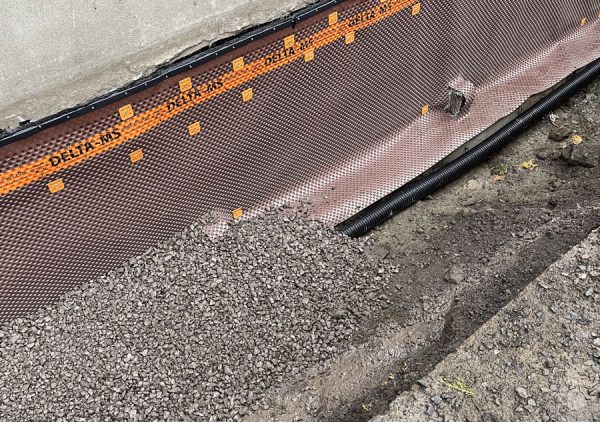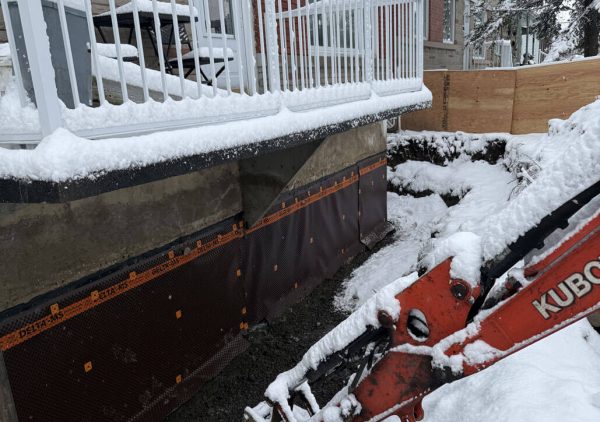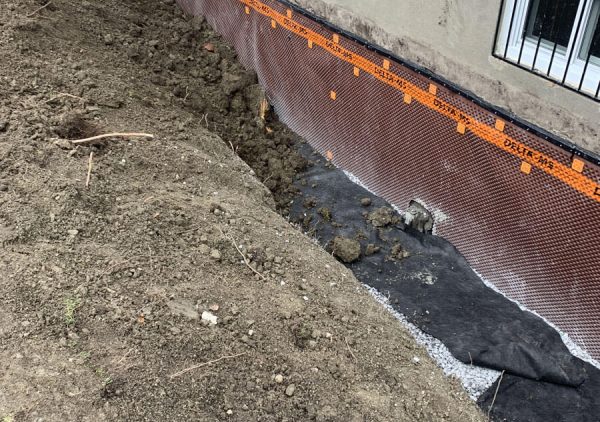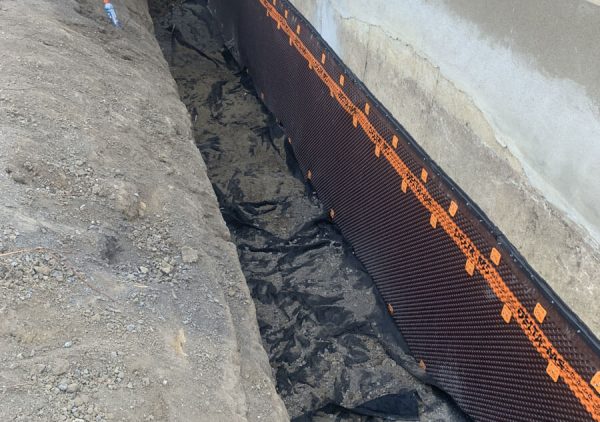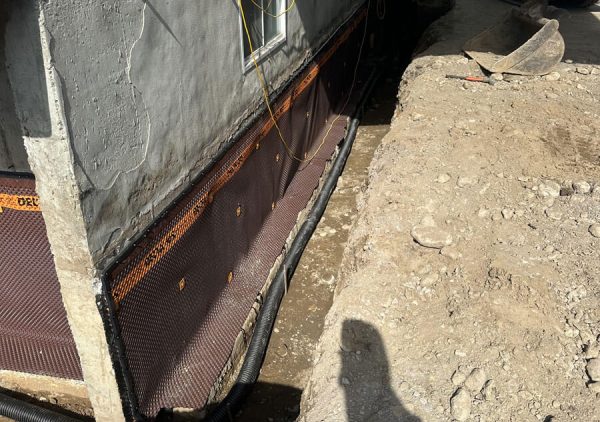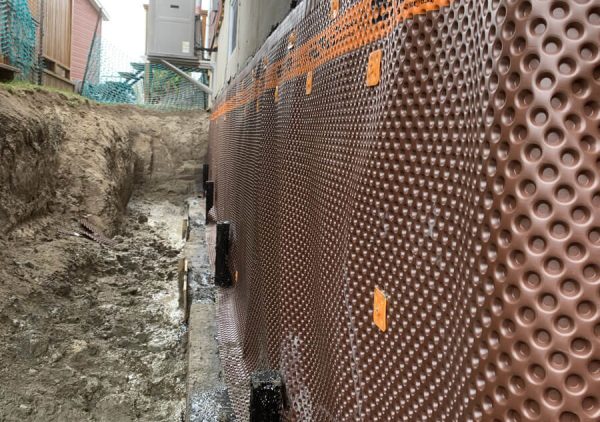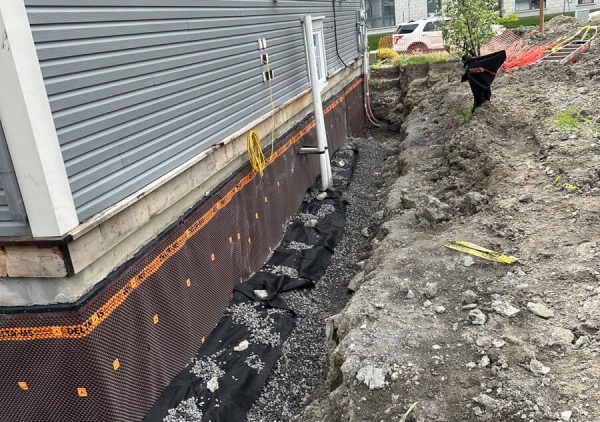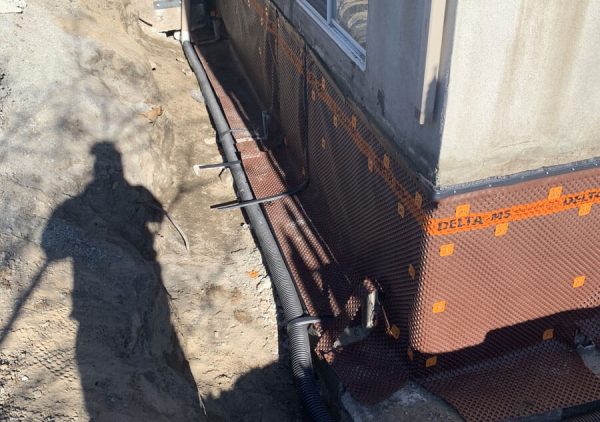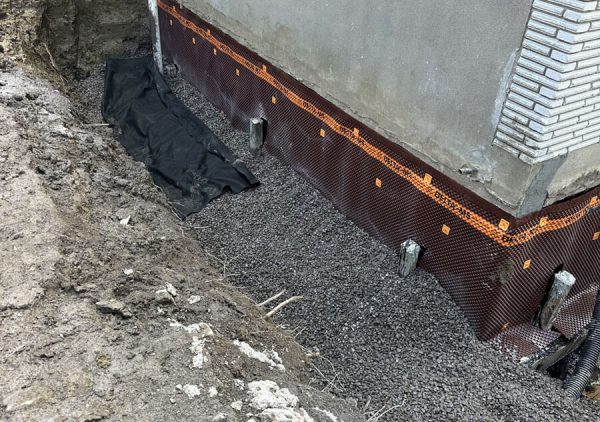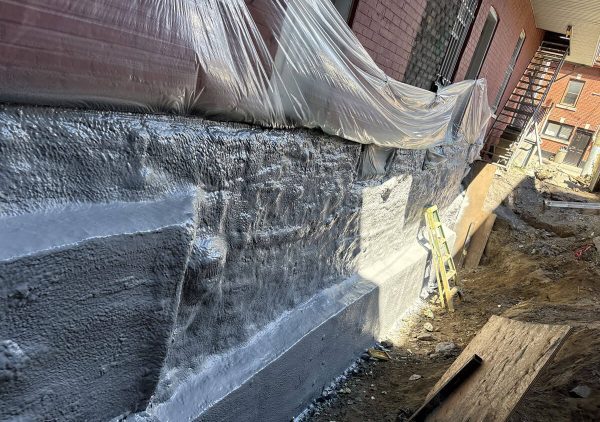Foundation waterproofing
Protect your building against moisture and infiltration with Fondabec
Water is one of the worst enemies of foundations. When it seeps through concrete walls or the footing, it can cause serious damage: cracks, spalling concrete, chronic humidity, mould, and a loss of property value. To avoid these problems, it is essential to protect your building with effective and durable foundation waterproofing.
At Fondabec, we operate across Quebec to carry out exterior waterproofing work using the best membranes on the market, suitable for poured concrete or block foundations. Whether preventive or corrective, our team offers tailor‑made solutions adapted to local soil conditions.
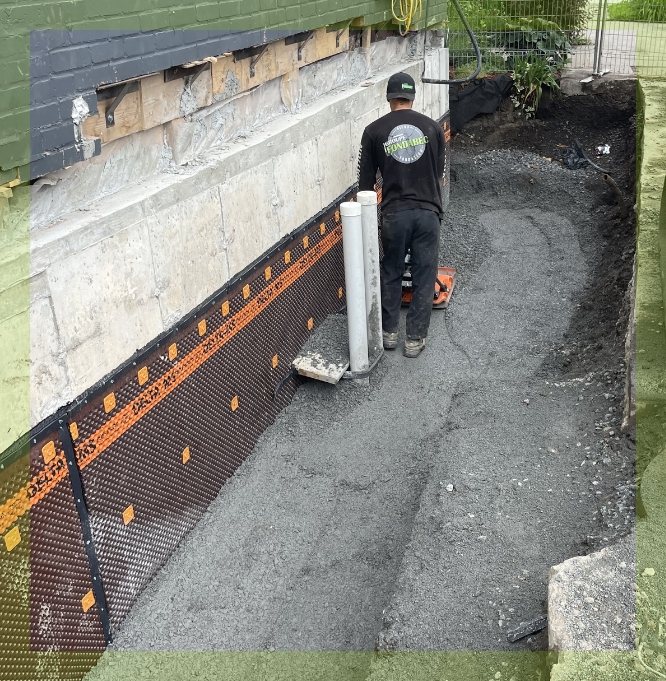
Why waterproof a foundation?
Soil moisture, water infiltration and freeze–thaw cycles exert constant pressure on your foundations. Without adequate protection, water can seep into the concrete, causing cracks, damp patches, mould and degrading the basement environment.
Foundation waterproofing, also called foundation sealing, is an essential intervention aimed at protecting the building’s structure over the long term by blocking any penetration of water from outside. It is particularly recommended when replacing a French drain, repairing a crack or refurbishing the footing.
In what cases should you waterproof your foundation?
Waterproofing a foundation is not only recommended for new construction. It becomes necessary as soon as water threatens the integrity of the footing or signs of dampness appear in the basement. It’s important to act quickly, because neglected infiltration can lead to significant repair costs.
Here are the most common situations in which exterior waterproofing should be considered.
Water infiltration in the basement
Poor drainage around the building
Presence of cracks or degraded concrete
Major construction or renovation
The advantages of exterior waterproofing
Among the different sealing techniques, exterior waterproofing is the most complete and durable. Unlike temporary solutions carried out from the inside, it acts directly on the source of the problem: water that exerts constant pressure on the foundation walls.
It is the method favoured by experts when conditions allow, whether for an existing house or during new construction. Here are the main advantages of this approach.
Complete protection against water and humidity
Preservation of the integrity of the concrete or block
Increase of the lifespan of the foundation
Waterproofing solutions used by Fondabec
Elastomer membrane applied hot or cold
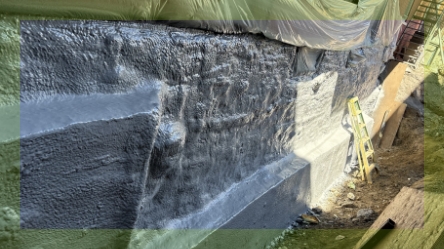
Self‑adhesive or multilayer membrane with drainage panel
- A primer to ensure adhesion
- A bituminous or polymer self‑adhesive membrane
- A drainage panel such as Delta‑MS or equivalent
Integrated peripheral drainage
Successful waterproofing also relies on effective perimeter drainage. If the French drain is absent, clogged or poorly installed, water pressure around the house remains high despite an effective membrane.
That’s why Fondabec also offers to install or replace the French drain, including:
- A bed of clean stone
- A filtering geotextile
- An access trap for future cleaning
- A discharge outlet to a sump or storm sewer
A doubt or a question concerning an infiltration?
For more than 20 years, Fondabec has been assisting homeowners in Greater Montreal and across Quebec with their foundation waterproofing projects. Whether you’re in Laval, Longueuil, Terrebonne, the North Shore, the South Shore or another region, our team travels quickly to assess your situation and propose the most durable solution.
Fill out this form or call us today!
FAQ
How much does it cost to waterproof a foundation?
What is the difference between waterproofing and sealing?
Can a foundation be waterproofed in winter?
Is it possible to waterproof a foundation from the inside?
Which membrane is the most effective?
For over 20 years, Fondabec has been assisting homeowners in Greater Montreal and throughout Quebec with their excavation projects.
- 957 Rue des Forges, Terrebonne, QC J6Y 0J9
- (514) 838-5379
- info@fondabec.ca
-
Monday to Saturday
7:00 am to 6:00 pm

